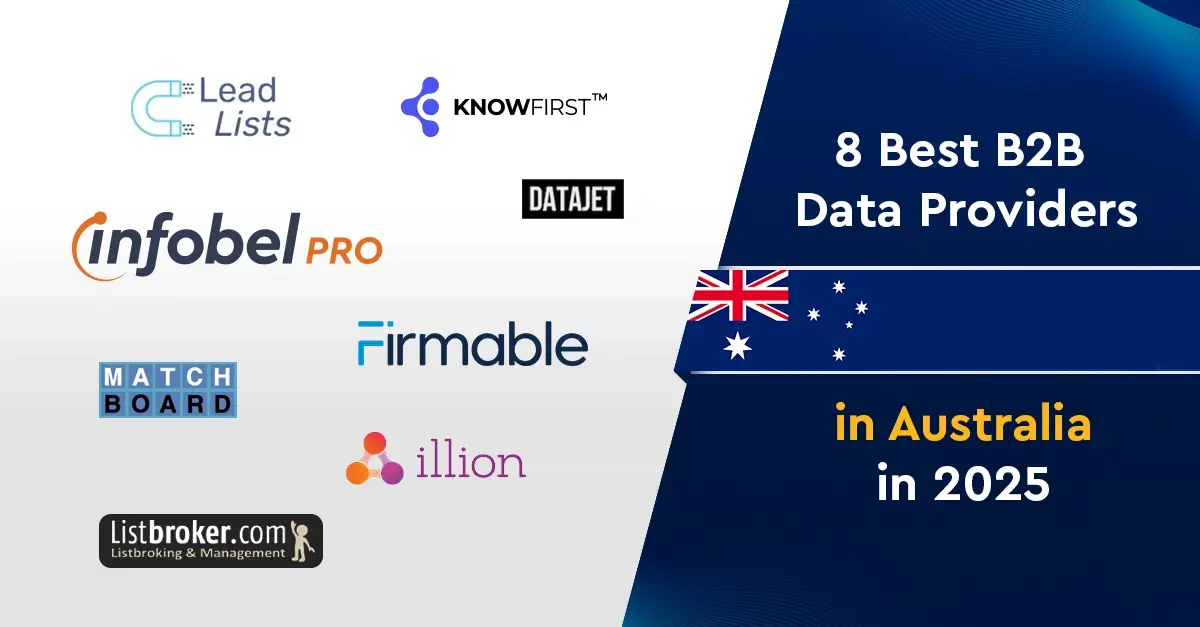The fast-paced world and largely competitive B2B landscape effectively engage and convert leads important for business success. As traditional marketing tactics evolve with time, B2B retargeting has come up as an eminent strategy that captures the attention of prospects, nurturing them through the sales funnel and ultimately fetching conversions.
B2B retargeting, also known as remarketing is a process of involving ads at users who have initially interacted with your website or digital content but failed to take relevant action like making a purchase or filling out an enquiry. Unlike traditional outbound marketing approaches that leverage a large net and hope for leads, retargeting is focused on re-engaging with prospects who have already shown interest in your products or services. Getting engaged in personalized messaging and adept content for these individuals' businesses enhances brand awareness, builds trust, and ultimately results in more conversions.
What is B2B Retargeting?
B2B retargeting also known as remarketing is a process of targeting ads at audiences who have previously interacted with your website or digital content but have not yet taken any desired action like making a purchase or filling out a contact form. Unlike traditional advertising, which impacts a wide of potential customers, net retargeting is focused on engaging prospects who have themselves shown interest in your offerings which increases the likelihood of conversion.
.png?width=500&height=323&name=Green%20and%20Yellow%20Minimalist%20Business%20Training%20Agency%20Instagram%20Post%20(32).png)
Example of B2B Retargeting?
Consider a software company that leverages project management solutions for businesses. When a visitor reaches the official website and searches through the product features or product demo videos without leaving any sign for a trial, the organization retargets them with customized ads across different channels.
For example, the visitor might see display ads that showcase specific features they have viewed on the website while searching their best industry-related websites or social media platforms like LinkedIn. Moreover, the organization might align targeted follow-up emails which highlight the benefits of their software and offer a limited-time free trial that entices the prospects of reconsidering and taking further steps towards conversion.
Types of B2B Retargeting Ads
While crafting retargeting campaigns or ads for your B2B audience, it is important to leverage a variety of ad formats and channels that maximize reach and engagement. Some major types of B2B retargeting ads are:
Display Ads:
These visually appealing ads are more available on websites with the Google Display Network or other third-party platforms which serve google ads as gentle reminders to prospects who have previously visited your site.
Social Media Ads:
Social Media Platforms like LinkedIn, Facebook, and Twitter offer robust retargeting capabilities, which allow reconnection with prospects across their social feeds with curated ad content.
Video Ads:
The audience is also engaged through compelling video content which brings your product or the key features into major reflection. Video ads are typically more effective at capturing attention and driving engagement.
Email Retargeting:
Extend your efforts in retargeting beyond display and social ads through the incorporation of retargeting elements into your campaigns' email marketing. Align personalized follow-up emails to your prospects who have abandoned their carts to encourage them to complete their purchase.
.png?width=500&height=329&name=Green%20and%20Yellow%20Minimalist%20Business%20Training%20Agency%20Instagram%20Post%20(35).png)
How to Use B2B Retargeting to Convert More Sales Prospects
To implicate the full potential of B2B retargeting, businesses must adopt a strategic approach. Let us understand a step by step by step process for leveraging the retargeting the lead generation and conversion:
Select the Right Channels:
Choosing the appropriate channels for retargeting is important to reach your audience effectively. Consider factors like audience demographics, platform availability, and compatibility with ad format while deciding where to position your retargeted ads.
Create Remarketing Lists:
Segment your website visitors into unique remarketing lists based on their behaviour, demographics, or stage in the sales funnel. This lets you curate your retargeting campaign to specific segments of audiences which increases relevance and engagement.
Create Custom Content Around Each Segment:
Curate personalized ad content that illustrates the needs and pain points of each remarketing list well. Whether it is emphasizing product features, offering exclusive discounts, or addressing some common objections, personalizing messaging increases its resonance with targeted prospects.
Track and Measure Your Results:
Monitor the performance of your targeting campaigns by implementing key metrics like CTR, conversion rates, and ROAS. Analysis of these insights helps you to refine the strategies and optimize effective campaigns over time.
.png?width=500&height=438&name=Green%20and%20Yellow%20Minimalist%20Business%20Training%20Agency%20Instagram%20Post%20(29).png)
Remarketing to Customers at Each Stage of the B2B Sales Funnel
- Awareness Stage:
At the top of the funnel raising brand awareness and capturing the attention of prospects is a high priority with an aligned brand or solution. Utilization of engaging ad creatives along with informative content and focused value propositions to mark interest and drive traffic to your website. - Consideration Stage:
In the middle of targeting the prospects who have demonstrated an interest in your offerings but have not yet made any purchase decision. It is advisable to serve them relevant content such as case studies, product demos, or comparison guides to educate them to alleviate any concerns - Decision Stage:
At the bottom of the funnel retargeting prospects who are on the verge of conversion but may need an extra push to freeze the deal. Offer incentives such as limited-time discounts, free trials, or exclusive bonuses for incentivized action and compel them to take the next action.
Just How Effective is this Sales Strategy?
The effectiveness of B2B retargeting as a sales strategy cannot be just underestimated. There have been multiple studies and industrial reports that highlight the impressive ROI and conversion rates attached to retargeting campaigns. As per the research, retargeted customers are 70% more likely to convert in comparison to non-retargeted customers. These statistics highlight the pivotal impact that a retargeting campaign has on getting more sales and revenue for B2B businesses.
One of the major reasons behind the effective campaign success of B2B retargeting is its way of targeting prospects with highly important and personalized messaging. Unlike traditional advertising methods are often reliant on generic messaging and broad audience targeting, retargeting helps businesses curate their ads based on past interactions with their website or digital assets. Whether it is to highlight specific product features, catering common pain points, or share exclusive discounts, retargeting ads can directly be in alignment with the needs and interests of individual prospects which enhances the likelihood of conversion.
Additionally, B2B retargeting helps businesses stay top-notch with prospects throughout the process of making decisions.
Displaying ads to users who have already reflected their interest in offerings, helps organizations position their brand message engage their prospects with apt value positions, do lead nurturing and share additional incentives that help them take the next steps towards conversion. This aligned presence is pivotal in nurturing leads and sharing the next steps through the funnel which results in higher rates of conversion and increased revenue.
Another factor that contributes to achieving the effectiveness of B2B retargeting is its ability to align with prospects across various touchpoints, and devices. With the proliferation of digitalization and the increase of omnichannel marketing, businesses can easily direct retargeted visitors and users across different platforms which include websites, social media, email, and mobile apps. This approach allows retargeting campaigns which are solemnly visible to prospects whenever they are online improving the likelihood of engagement and conversion.
What is the difference between Remarketing and Retargeting?
Remarketing and retargeting are majorly used interchangeably but have a subtle distinction between the two. Retargeting means the practice of targeting ads at users who have previously interacted with your website or digital content. On the contrary, remarketing includes re-engaging with customers through email, ad campaigns, or direct communication channels.
.png?width=500&height=330&name=Green%20and%20Yellow%20Minimalist%20Business%20Training%20Agency%20Instagram%20Post%20(33).png)
Best Practices and Strategies for B2B Retargeting:
Audience Segmentation:
It is better to segment your audience based on their behaviour, demographics, or stages in the sales funnel. This lets you deliver highly targeted and relevant retargeting campaigns that resonate with each group's unique needs and interests.
Implement Dynamic Retargeting:
Dynamic Retargeting helps you automatically create personalized ads based on the specific products or pages with higher interaction on your website. This level of customization improves the ad relevance and encourages the prospects to revisit your site and complete their pending purchase.
Implement Frequency Capping:
Avoid shooting your prospects with excessive retargeting campaigns and implement frequency capping. It will limit the number of times an individual will see your ad in a specific time frame and further helps to recapture lost leads and maintain a positive user experience preventing ad fatigue.
Optimize Ad Creative and Copy:
Curate compelling ad creatives and impressive landing pages that communicate your value proposition and allow your target prospects to take the recommended action. Experiment with different messaging, visuals, a social proof landing page, and calls to action to identify what is in best resonance with your target audience.
Test and Iterate:
Different ad formats must be continuously tested and analyzed for audience segments and campaign variables to identify what fetches the best results. A/B testing helps in refining your retargeting strategies and optimising performance based on real-time data and insights.
Analyze the Results & Adapt
it is recommended to monitor your performance regularly of your retargeting campaigns while analyzing the key metrics for gauging their effectiveness. Discover areas for improvement and make data-driven adjustments that refine your targeting, messaging, and overall strategy.
Retargeting Across Multiple Channels
Reaching the target audience is vital for increased engagement and opportunities for conversion. B2B retargeting across multiple channels includes leveraging a variety of platforms and touchpoints for reconnecting with prospects who have been engaged with your brand. Extension of these efforts beyond the traditional display of ads helps include personalized advertising, social media, email, search, and other digital channels that result in increased brand visibility, reinforced messaging, and more conversions.
Pixel-Based Retargeting:
Pixel-based retargeting is based on tracking pixels, small snippets of code embedded n\on your website which helps in collecting data on user behaviour and engagement. These pixels on ad placements enable you to identify past visitors, who have held interactions with specific pages or actions on your site like viewing product pages, adding items to the cart, or initiating checkout. Getting hold of this data helps create custom retargeting audiences and serve targeted ads to users based on their past interactions thereby enhancing the relevance and effectiveness of your targeting campaigns.
Using Targeted Landing Pages:
Using targeted landing pages is important in maximizing the effectiveness of your retargeting ads. Not just targeting the retargeted traffic to the generic homepage or the product pages, a dedicated landing page has been curated to meet the specific needs and interests of each segment of the audience. The landing page needs to be in close alignment with the messaging and various offers presented in your retargeting ads. They must provide a seamless and personalized user experience that promotes lead conversion. Optimization of the content on landing pages, design, and call to action for each segment of the audience increases the conversion rates and fetches more valuable leads through the retargeting strategies.
Implementing Funnel Stages for Segmenting Your Visitors:
Segmentation of your website visitors based on their stages in the funnel helps in delivering the retargeted ads and content in alignment with the needs and interests of your target audience. Understanding where your prospects are in their buying journey whether it is awareness, consideration, or decision stage helps in curating your retargeting efforts in addressing their specific challenges and objections. For example, while setting up a retargeting campaign prospects are in the awareness stage and benefit from educational content and thought leadership resources while the audience in the decision stage responds better to product demos and free trials. Segmentation of visitors based on the funnel stages helps in creating more relevant and compelling retargeting campaigns that drive engagement and conversion at every stage of the buyer's journey.
.png?width=500&height=331&name=Green%20and%20Yellow%20Minimalist%20Business%20Training%20Agency%20Instagram%20Post%20(37).png)
Disadvantages of Retargeting
While retargeting is quite an effective strategy as it helps increase brand visibility and garner conversions, it also comes up with specific disadvantages:
- Ad Fatigue: Overexposure to retargeting ads leads the website visitor to ad fatigue which causes users to ignore or actively avoid the ads altogether.
- Intrusiveness: Some users believe retargeting ads as invasive it intrusive specifically if they take them as overly aggressive or persistent.
- Privacy Concerns: Retargeting is reliable in tracking user behaviour across the web and raising privacy concerns among users who may feel uncomfortable with the idea of being in a continuous monitoring state targeted with personalized ads.
- Limited Reach: Retargeting is reliable on existing website visitors which means it may have limited reach in comparison to other advertising methods which target broader audience segments.
Who is Retargeting Primarily For?
Retargeting is majorly for businesses looking to re-engage with prospects who have reflected interests in their products or services but have yet not converted. It is majorly beneficial for B2B marketers who want to stay in the top alignment with the prospects throughout the difficult sales cycle and guide them through the process of decision-making. Targeting these users allows you to deliver personalized messaging and offers which can garner more converted leads.Does Remarketing Work for B2B?
Absolutely, remarketing works effectively for B2B marketing. Retargeting prospects who have already been in continuous engagement with your website helps you stay on the top of their minds and bring them close to conversion. Things like opting for a demo, downloading a whitepaper, requesting a consultation, etc resonate effectively with their specific needs and interests.
Understanding List-Based Retargeting
List-based retargeting is a digital marketing strategy that involves targeting specific groups of users based on predefined lists of criteria. These lists typically consist of user data like email addresses, phone numbers, or other identifiers which are collected through multiple sources like website registrations, email subscriptions, CRM systems, or offline interactions.
Here is how a list-based retargeting typically works:
- List Creation: Marketers comprise lists of user data based on particular criteria or behaviours. For instance, they might form lists of website visitors who have abandoned carts or users who have downloaded whitepapers, or subscribed to the newsletter.
- Data Upload: The lists are uploaded to a retargeting platform or advertising network. This platform matches the data uploaded with its database for the identification of users across different online platforms and devices.
- Targeting: Once the lists are uploaded and matched, advertisers can curate targeted ad campaigns which are aimed at the users on these lists. They can serve ads to these users when they browse websites, use mobile apps, or engage with social media platforms.
- Personalization: Marketers can easily personalize their ads based on the information they have about the users on their lists. This includes showing product recommendations based on past purchases, promoting exclusive offers to loyal customers, or tailored messaging to match the interests of specific segments.
List-based retargeting offers multiple benefits:
- Precise Targeting: Marketers reach particular groups of users who have shown interest in their brand or products which increases the likelihood of conversion.
- Customization: Advertisers tailor their messaging and offer to match the preferences and behaviours of multiple user segments which improves relevance and engagement.
- Higher ROI: Focusing on their advertising efforts on users who are already familiar with their brand or have expressed interest in their products, marketers help achieve higher conversion rates and return on investment (ROI).
However, marketers need to adhere to privacy regulations and obtain consent from users before using their data for retargeting purposes. Additionally, they should ensure that their retargeting efforts are balanced and not overly intrusive as excessive ad frequency which leads to user fatigue and negative brand perceptions.
Conclusion
B2B retargeting is a multifaceted strategy which needs careful planning, execution, and optimization to fetch meaningful results. Implementation of these strategies and best practices as reflected through this blog and continuous monitoring and adapting our marketing strategies and campaigns based on the performance data and user feedback helps in fetching the full potential of retargeting to fetch high-quality leads, nurturing prospects through the sales filter, and in turn drive conversions and revenue growth for your business.
It is vital to understand that B2B retargeting is not a solution that fits all sizes and success needs a combination of creativity, analysis, and iteration. Experimentation with different targeting parameters, ad formats, and messaging approaches in digital marketing for identification of what resonates best with your audience that fetches the desired outcomes.
With persistence, patience, and a commitment to delivering value to your prospects, B2B retargeting becomes a cornerstone of your marketing strategy which helps you achieve your business objectives and stay ahead of the competition in a regular competitive marketplace.


.webp)


Comments